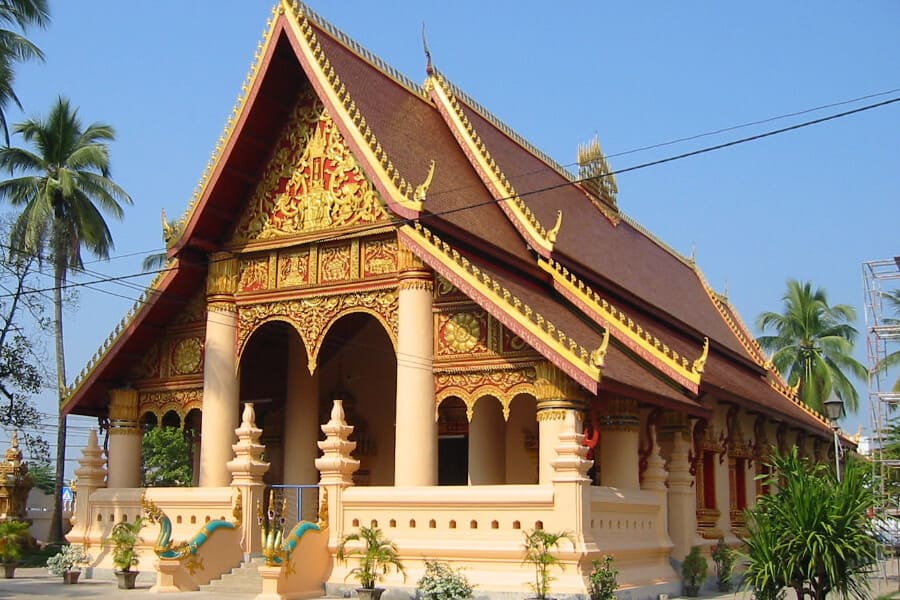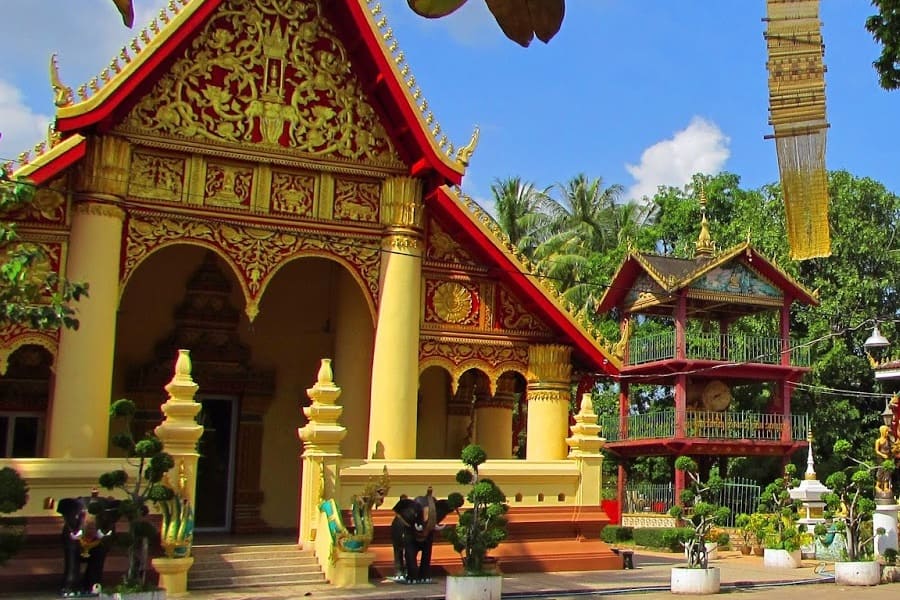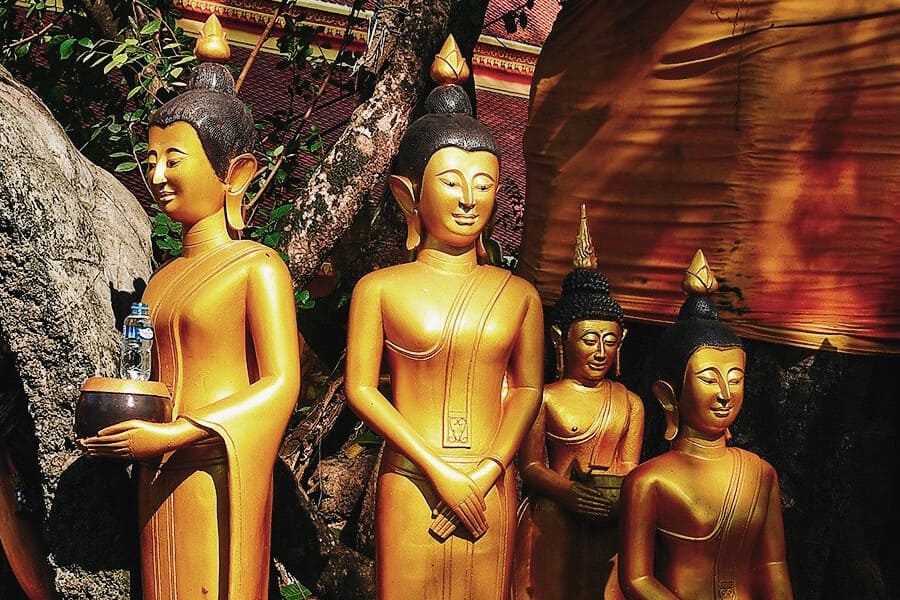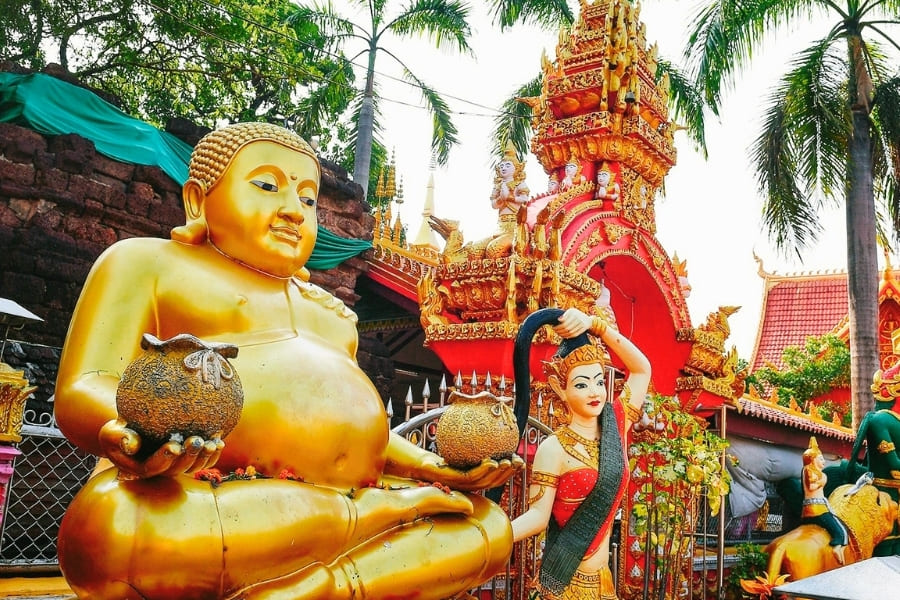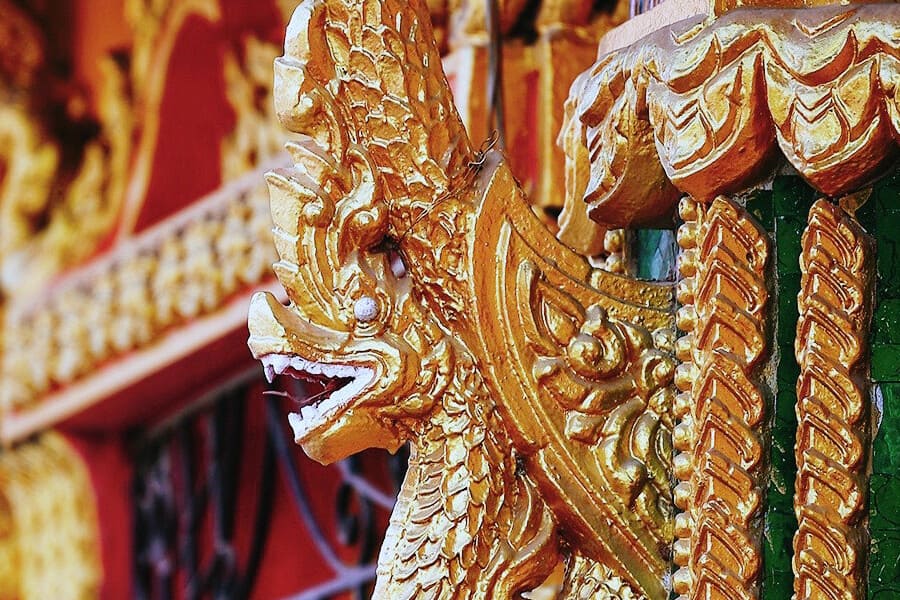Embark on a captivating laos tours and discover the cultural gem of Si Muang Temple nestled in the heart of Vientiane. This vibrant temple stands as a testament to Laos' rich spiritual heritage, drawing pilgrims and tourists alike with its serene ambiance and ornate architecture.
An Overview of Si Muang Temple
Si Muang Temple, located in the heart of Vientiane, the capital city of Laos, is a revered religious site steeped in spiritual significance and cultural heritage. This vibrant temple is dedicated to the guardian spirit of the city, known as Si Muang, and holds a special place in the hearts of locals and visitors alike.
Adorned with intricate Buddhist artwork and colorful embellishments, the temple's architecture reflects Laos' rich cultural traditions. Pilgrims flock to Si Muang Temple to pay their respects, offer prayers, and seek blessings for good fortune and protection. The atmosphere within the temple is imbued with a sense of serenity and devotion, making it a peaceful retreat amidst the bustling cityscape of Vientiane.
A visit to Si Muang Temple offers not only a glimpse into Laos' spiritual heritage but also a chance to immerse oneself in the country's vibrant religious practices and traditions.
The History of Si Muang Temple
Si Muang Temple holds a significant place in the history and culture of Laos. Legend has it that the temple was built in the late 19th century during the reign of King Setthathirath, though the exact date of its construction remains unclear. The temple is named after a young woman named Si Muang, who, according to folklore, sacrificed herself during the temple's construction to appease the spirits and protect the city from misfortune.
Over the centuries, Si Muang Temple has undergone various renovations and expansions, evolving into the magnificent complex it is today. Its architecture blends traditional Lao and Buddhist styles, featuring intricate carvings, colorful murals, and ornate decorations that reflect the country's rich cultural heritage.
Throughout its history, Si Muang Temple has served as a focal point for religious ceremonies, festivals, and community gatherings, playing a vital role in the spiritual life of Vientiane residents. Pilgrims and visitors flock to the temple to pay homage to the guardian spirit Si Muang, seeking blessings for health, prosperity, and happiness.
The Architecture of Si Muang Temple
The architecture of Si Muang Temple in Laos is a splendid example of traditional Lao Buddhist design, characterized by its elegant simplicity and ornate embellishments. The temple complex consists of several buildings, each serving specific religious and ceremonial purposes.
The main hall, or "sim," is typically adorned with a multi-tiered roof, intricately carved wooden eaves, and gilded decorations. Inside the sim, visitors will find a central altar housing statues of the Buddha, as well as intricate murals depicting scenes from Buddhist mythology and the life of the Buddha.
Surrounding the main hall are various smaller structures, including prayer halls, meditation pavilions, and monk's quarters, all connected by covered walkways and lush gardens. These buildings feature similar architectural elements, such as steeply pitched roofs, decorative wooden carvings, and vibrant paintwork.
One notable feature of Si Muang Temple is its "ho tai" or spirit house, dedicated to the guardian spirit Si Muang. This small shrine is often adorned with offerings of flowers, incense, and food, and serves as a focal point for devotees seeking blessings and protection.
The Spiritual significance in Si Muang Temple
Si Muang Temple holds profound spiritual significance in Laos, serving as a revered sanctuary where devotees come to pay homage, seek blessings, and connect with the divine. At the heart of its spiritual importance lies the veneration of Si Muang, the guardian spirit of Vientiane, whose legend is deeply intertwined with the temple's history.
Legend has it that Si Muang, a young woman, sacrificed herself during the construction of the temple, becoming the guardian spirit of the city. As such, the temple is regarded as a place of protection and benevolence, where Si Muang's spirit watches over the community, warding off misfortune and bringing good luck to those who seek her blessings.
Devotees flock to Si Muang Temple to offer prayers, make offerings, and participate in religious ceremonies, seeking guidance, healing, and spiritual fulfillment. The temple's serene ambiance, adorned with flickering candles, fragrant incense, and colorful decorations, provides a sacred space for introspection and reverence.
Throughout the year, Si Muang Temple hosts various religious festivals and rituals, including Boun Si Muang, a vibrant celebration dedicated to honoring the guardian spirit. During these festivities, devotees gather to make merit, participate in processions, and seek blessings from the temple's resident monks.
Beyond its role as a religious center, Si Muang Temple also serves as a cultural landmark and symbol of national identity, embodying the spiritual beliefs and traditions of the Lao people. Its enduring significance underscores the profound connection between faith, community, and the spiritual heritage of Laos.
How to Reach Si Muang Temple?
Si Muang Temple is a prominent Buddhist temple located in Vientiane, Laos. Here's how you can reach it:
- Walking: If you're staying in the central area of Vientiane, it's possible to walk to Si Muang Temple. The temple is located near the city center, making it accessible on foot from many accommodations and other attractions.
- Tuk-tuk: Tuk-tuks are a popular mode of transportation in Vientiane. You can easily find tuk-tuks around the city, and they can take you directly to Si Muang Temple. Negotiate the fare with the driver before starting your journey.
- Taxi: Taxis are also available in Vientiane, although they are less common than tuk-tuks. You can hail a taxi on the street or use ride-hailing apps like Grab to book a taxi to take you to Si Muang Temple.
- Bicycle: Renting a bicycle is another option if you prefer a more eco-friendly and leisurely mode of transportation. You can rent bicycles from various shops in Vientiane and cycle to Si Muang Temple at your own pace.
- Motorbike: If you're comfortable riding a motorbike, you can rent one and drive to Si Muang Temple. However, be aware that traffic conditions and road regulations may differ from what you're accustomed to, so exercise caution.
Whether you're marveling at the intricate carvings adorning its structures or partaking in a moment of reflection, Si Muang Temple promises an unforgettable experience on your Laos tour, leaving you with cherished memories of spiritual enlightenment amidst the bustling cityscape.

